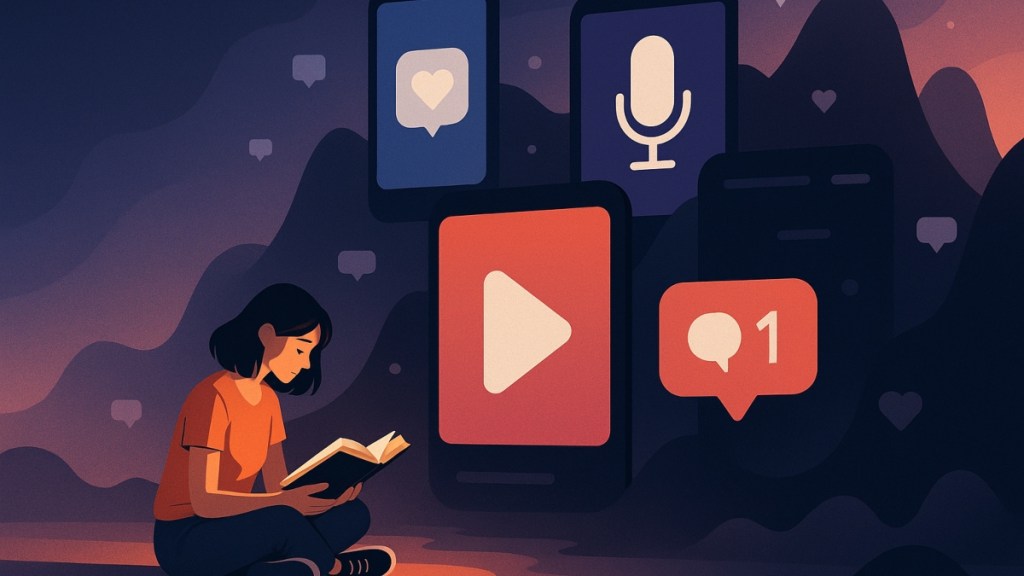In a world dominated by algorithm-driven feeds, short-form videos, audio books and instant AI-generated summaries, the way we consume knowledge is undergoing a drastic change. The ritual of reading books faces lethal competition from the seductive pull of reels, tweets and endless notifications.
“Let’s be honest! books felt boring even back then. But there were no alternatives, so we had no choice but to learn from them. Today, the landscape has changed. Learners now have access to visual, interactive and bite-sized content that feels more natural and engaging,” Diwakar Chittora, CEO, Intellipaat, said.
This new reality poses a provocative question: Are students still reading books? And if not, what are educators and institutions doing to bring back the magic of reading?
Only 34.6% of children and young adults aged 8-18 say they enjoy reading in their spare time, the lowest since 2005. Even more striking, just 1 in 5 (20.5%) report reading daily for pleasure, according to the National Literacy Trust’s 2024 Annual Literacy Survey. These numbers paint a stark picture: traditional reading is losing its grip on the next generation.
“In a world where knowledge consumption comes out of reels, tweets and algorithm-based snippets, the orthodox way of reading and learning through books faces an undeniable challenge,” Manoj Agarwal, Director, AAFT, Noida, said.
Rethinking what it means to be a reader
Is this the end for books? Not quite. Education leaders argue that the issue is not a simple decline, but a transformation. Firoz Thairinil, Founder and CEO of UniAthena, observes that students around the world are still reading but not in the same way as the previous generations. “It’s just that attention spans have shifted and we need to work around that,” he said.
With the average human attention span now as low as 8.25 seconds, expecting students to spend hours with dense textbooks is unrealistic. The challenge is to meet students where they are and that means reimagining how reading fits into their digital lives.
Ed-tech: The new ally (and rival) of books
Ed-tech platforms have become vital in this new landscape, not to replace books, but to make them part of a more holistic, engaging learning experience. Gamification, AI-curated summaries, and interactive e-books are making literature more accessible and entertaining.
But there’s a catch. Research published in 2024 shows that while digital reading offers convenience and engagement, traditional reading is still superior for deep comprehension. Studies indicate that reading on screens tends to be faster and shallower, leading to weaker long-term retention. The consensus: Ed-tech should complement, not replace, core reading habits.
How institutions are sparking a reading revival?
Forward-thinking schools and colleges are trying new and creative ways to help students enjoy reading again. They are turning libraries into lively places where students can explore ideas and work together. At AAFT Noida, libraries now host screenplays, visual culture texts and biographies, blurring the lines between traditional and modern content.
They also let students choose books and materials that match their own interests and passions. Additionally, they include important and useful reading in lessons, so students feel that reading is meaningful and connected to real life.
“We challenge students to explore the history of design – fashion, interiors, graphics and jewellery through books, directly connecting reading to their passions and cultivating crucial research skills,” Nealesh Dalal, founder, JD School of Design, explained.
The future of reading isn’t about choosing between books and technology. It’s about creating a dynamic partnership where each enhances the other, ensuring students don’t just consume information, but truly engage, question and grow.

